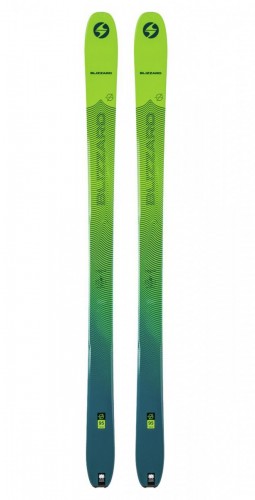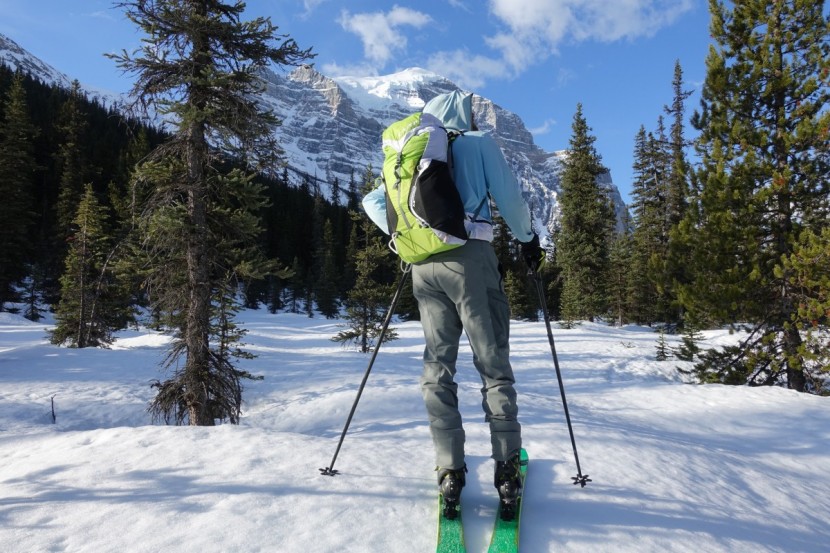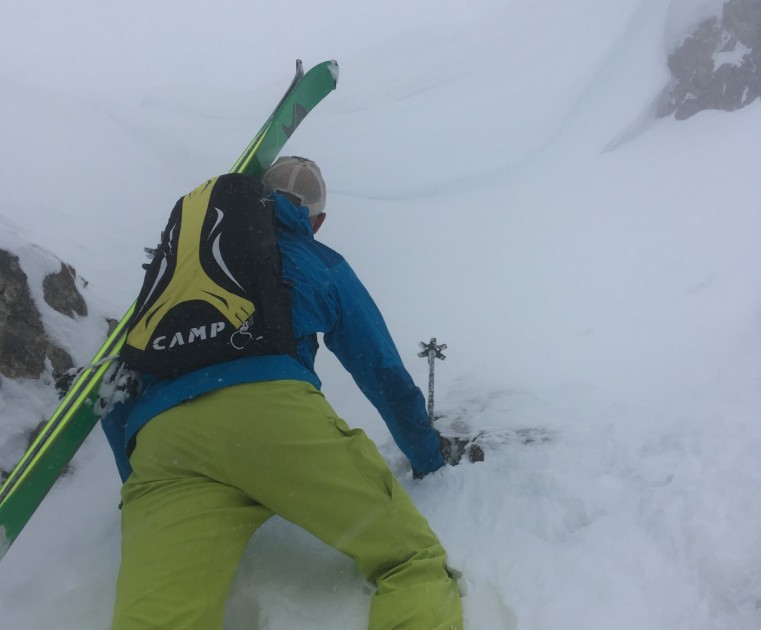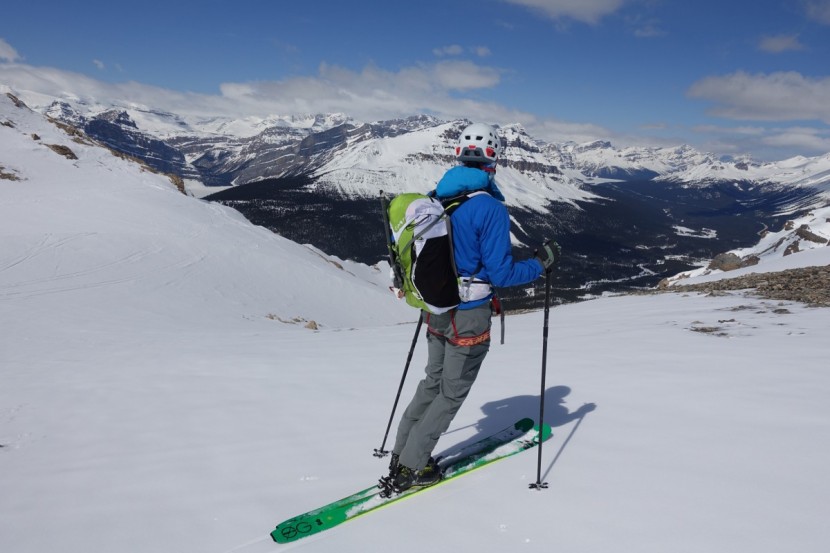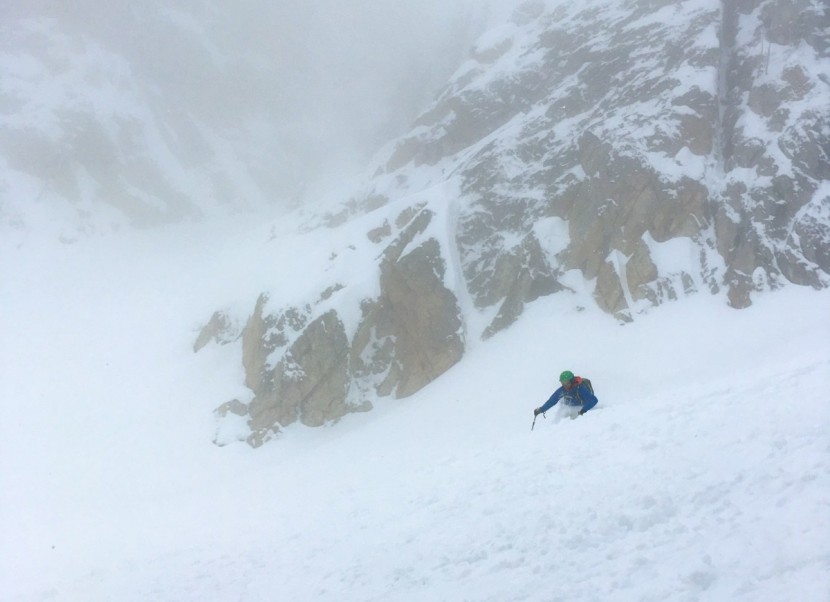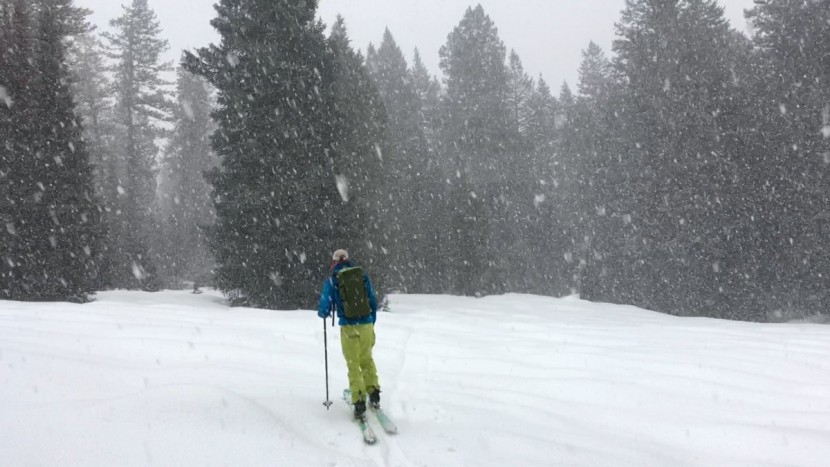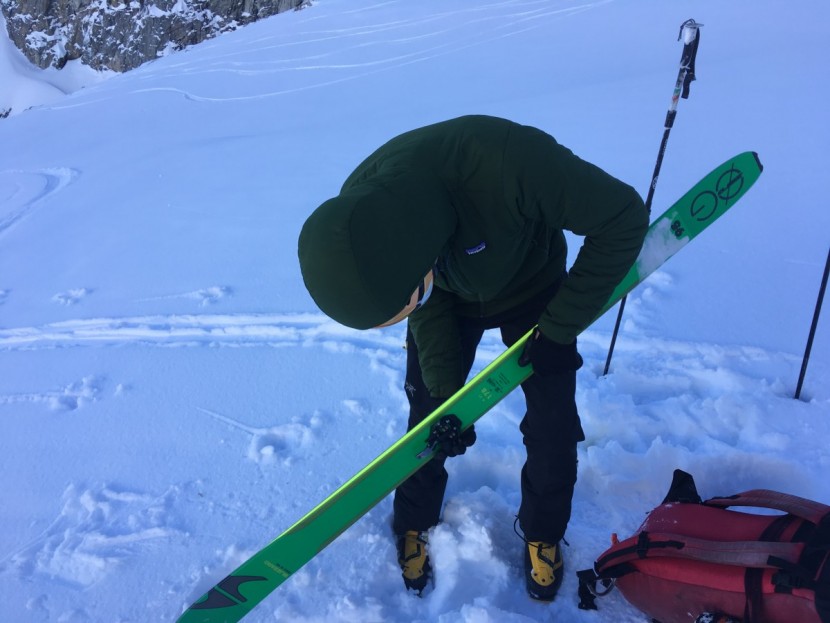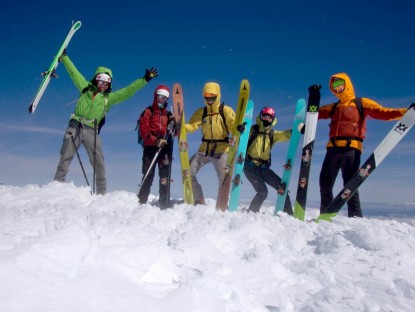This ski has been granted some updates since our test period. Details to follow.
October 2019Blizzard Zero G 95 Review
Our Verdict
Our Analysis and Test Results
Updates to the Zero G 95
The revised Zero G ski features increased rocker at the tip as well as slightly more beveled edges on the top sheets. The length of the sidewalls has been shortened, and the ski features new Carbon Drive 2.0 technology, which touts a unidirectional carbon fiber 3D-shaped frame and longer radius sidecut. Blizzard made many of these changes with the hopes of providing better performance and turning, especially in soft snow, but as we've yet to test the updated version, we can't yet vouch for the changes! Compare the two skis below; the new one is shown first, followed by the version we tested.
We're linking to the updated ski, but the review to follow tells only of our experience with the previous version we tested.
Hands-On Review of the Zero G 95
These are good times in the ski world. This Best Buy winner is somewhat inexpensive, with high-end performance, with the backing and pedigree of a long-time ski manufacturer. The greatest testament to the quality of these skis is that our lead test editor (and IFMGA ski and mountain guide) chose these for two different ski mountaineering guiding trips to Canada. Travel ski guiding like this, with diverse clients and rowdy terrain, is demanding, and one never knows what one is going to get. When Jed reported that he had reached for these skis, of all he had to choose from in this year's test roster, we were mightily impressed.
Weight
A pair of all-around touring skis under six pounds is very rare. Skis that perform this well at that weight are virtually unheard of. When we correct for surface area (a metric that doesn't really matter but helps paint a picture), the weight is a little less remarkable. In the end, in absolute terms, these skis will enable efficient climbing, whether they are on your back or your feet. When you consider downhill performance and price, this is an amazing product.
Stability at Speed
We don't expect lightweight skis to be super stable at speed. As soon as we pick these up, we lower our expectations further, as super light skis like this are notoriously twitchy. Our testers who made that cliche “hand flex” test were even more skeptical. These are downright rigid in flex. When we compare that flex of all our tested skis, these are the stiffest.
Light and stiff isn't necessarily a recipe for hard-charging stability. Nonetheless, these exceed our expectations at higher paces. We can't call them super stable, but they do better than we thought they would. In fast couloir apron exits in the Tetons and on the wide open glaciers of Alberta's Mount Hector, we could open it up as if we were on bigger rigs. We say this only about situations in which the surface was smooth and predictable.
Firm Snow
The narrow profile (relatively speaking) and super stiff longitudinal flex combine with other attributes to make a tenacious ice grabber. On steep and firm descents in Wyoming and Canada, our test team found inspiring and reliable grip. Some light skis grab well, but chatter before settling in. Something about the construction of the Blizzard (and we're not going to pretend to attribute this to any one construction or geometry attribute; ski performance is definitely more than the sum of its parts, no matter how other reviews are worded) dampens that chatter to dig in with authoritative stability.
No matter what is trendy, narrow skis grab firm snow better, and firm snow is a big mountain ski reality. If you're going to ski ice, do so on narrow skis anytime possible. 95mm isn't the narrowest available, but it does seem to be a sweet spot for all-around performance. Now, narrowness isn't the only issue when it comes to firm snow. Skis need to be constructed well too. We found that the Blizzard, for instance, grabs firm snow way better than its cousin (Black Diamond and Blizzard are rumored to use the same ski factory in Austria) Black Diamond Route 95. Interesting.
Powder
Powder snow is enjoyable, no matter what modern skis you are on. Don't believe those that tell you that you need big monsters for deep powder. That being said, bigger skis are a little easier and a little more fun than little ones. The Zero G 95 that we tested are shorter than we might have liked in deep powder. We were mostly confined to shorter radius powder turns. We predict that, were we to size up with the Zero G, the longer ones would track a little better, but nothing like a fatter ski.
You won't buy these skis for pure powder touring. You will buy these skis for all-around backcountry skiing. And, the fact is, all-around backcountry skiing even in the best climates and seasons, is a lot of non-powder skiing. When you are blessed with powder, they won't let you down. If you have the good fortune of a higher than average proportion of perfect powder (Rogers Pass? Tetons?), steer clear of the Zero G 95 and lean towards something bigger.
Crud/Poor Snow
On sloppy exits, breakable sunset couloir aprons, and suffer-fest ski traverses, we had ample opportunity to ride tough snow on the Zero G 95. No one enjoys this (well, some of our test team is a little twisted…). However, everyone has to endure this in the backcountry. We look for even tracking skis that pop up out of the toughness for an edge change. Bigger, heavier skis can power through some things, but these lighter touring skis need to take a more nuanced approach; again, first impressions can mislead. One might expect that stiff and light skis would push through things, but get deflected in the process. That's sort of the case with the Zero G 95, but not as bad as you might fear. Careful, centered skiing gets one into at least slightly bad snow conditions without requiring survival techniques. When the snow is really past your comfort zone, even the best of skiers will have to resort to wedge and christie turns.
Value
These are great, all around, lightweight touring skis for anyone on even the slightest budget. Older models of the same thing are available for significantly discounted prices, but they were also made differently. It is this latest version that we really stand by.
Conclusion
As a quiver of one for dedicated, human-powered skiers, the Blizzard Zero G is great. The uphill efficiency is almost unmatched by any all-around ski. The downhill performance demands attention, but will truly serve in any conditions. As compared to the bulk of touring skis, these are remarkable. The ski mountaineering and all-around performance are downright impressive. The smaller stature and super stiff construction lean away from powder performance, but in all other conditions, they almost excel. That they can do this at such a low weight and at a reasonably affordable price point is quite remarkable.



